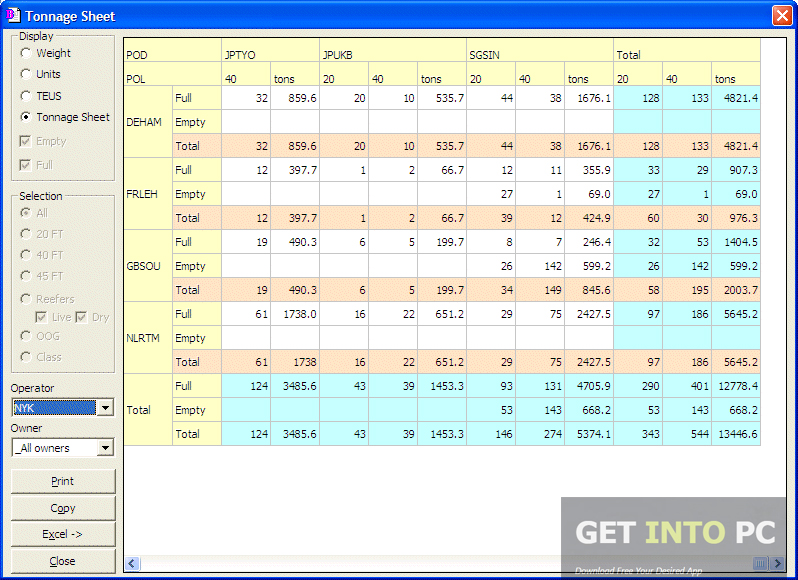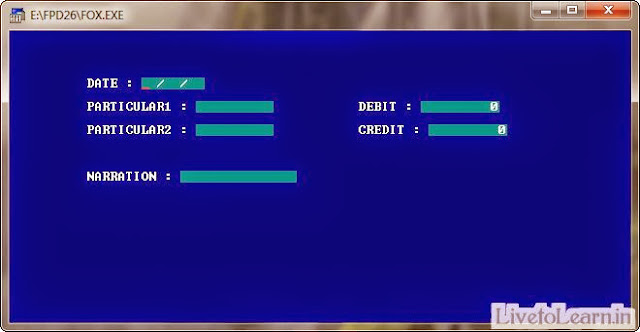

Notice that GETFILE() enables you to select a table fromĪny drive or directory and returns the fully qualified pathname LcNewFile = GETFILE('DBF', 'Pick table:', 'Select', 1) * Open CUST.DBF in the next available work area * Program 5.3 - Use ALIAS and FILE to open table in next Shown in Listing 5.3, provides this capability. Is not in the current or specified directory, open a dialog box
Foxpro 2.6 printing settings code#
Select the work area and open the table at the same timeīy adding the IN clause to the USE statement.īut before I show you the modified code that you use to open aįile this way, consider an additional enhancement. You don't even need a separate SELECT statement to openĪ table. Work areas by their alias name after opening them instead of using The table's name, but it doesn't have to be. Visual FoxPro assigns an alias name to a work area whenĪ table is open in it. You do not really need to know in which work area VFP opens aįile. Open a specific work area, Visual FoxPro 6 begins with work areaġ and continues searching until it finds the first empty one. Although you could write the code to perform such an iteration, Of course, you should test successive work areas to find an empty * Check if work area 2 is available (empty) * Program 5.2 - Use ALIAS to see if table is already open Of a file when present, to test whether a work area is empty, Use the ALIAS function, which returns the alias name Therefore, you shouldįind out whether the work area contains a file before you use The current directory or if VFP cannot open it, VFP closes theįile that was open in the selected area. This means that even if the file being opened is not in When you issue a USE command, whether the command succeeds Visual FoxProĦ automatically closes any file that is open in the selected area The preceding examples select the second work area without firstĬhecking to see whether another file is open there. Of course, you can include a drive and directory with the table's = MESSAGEBOX('File CUST.DBF does not exist in ' * Program 5.1 - Testing if a file exists before using it With the FILE function, as shown in Listing 5.1. You can also retrieve the current directory with this command:Ī safer way to open a file is to first test to see whether itĮxists before issuing the USE command. If CUST.DBF is not there, VisualįoxPro 6 displays the following message, which includes the current

The second command tries to open CUST.DBF from The first command tells Visual FoxPro 6 to use the second workĪrea. Table, select one of the 32,767 areas and issue a USE
Foxpro 2.6 printing settings free#
How do you open a table to look at it? If the table is a free See Chapter 9 "Creating Forms," and Chapter 10, "Creating Reports," for more information about private data sessions. If you use private data sessions, you will have 32,767 available in each private data session you open. Visual FoxPro does have more than 32,767 work areas available. Restrict most users to fewer than 256 files. It is unlikely that you will ever need to use all 32,767 areas-at Hold one table and its related indexes, both independent and compound. Visual FoxPro 6 supports 32,767 work areas.

To form relations between tables you use others to help retrieveĭata and to improve the performance of queries and reports.īefore you view data that is stored in a table or work with tableĭata in any other way, you need to open the table in a work area. Structural compound indexes, and non-structural compound indexes. Three major types of indexes: independent single-index files, The use (and misuse) of indexes greatly affects the way that you

In fact, databases provide additionalįeatures, such as persistent relations, that make working withĬritical to the viewing of data is the effective use of indexes. Working with tables bound into databases is not much more difficult To FoxPro users, you might find yourself supporting many existingĪpplications that still use the standalone table model. Many new data-management options that previously were unavailable Tables of information either as free tables or as part of an associated In this new release, you have the capability to store With Visual FoxProĦ, the way that you open and view data is determined by how you Tables and viewing the data that they contain. Special Edition Using Visual FoxPro 6 - Ch 5 - Selecting, Viewing, and Ordering Data Special Edition Using Visual FoxPro 6Ĭhapter 5 Selecting, Viewing, and Ordering DataĪ fundamental operation of any data-management system is opening Web Database Developer's Guide with Visual Basic 5 Yourself Web Publishing with HTML 3.2 in 14 DaysĬomplete Idiot's Guide to Creating an HTML Web Page Teach Yourself Java 1.1 Programming in 24 Hours Teach Yourself CGI Programming with Perl 5 in a week Second Edit


 0 kommentar(er)
0 kommentar(er)
